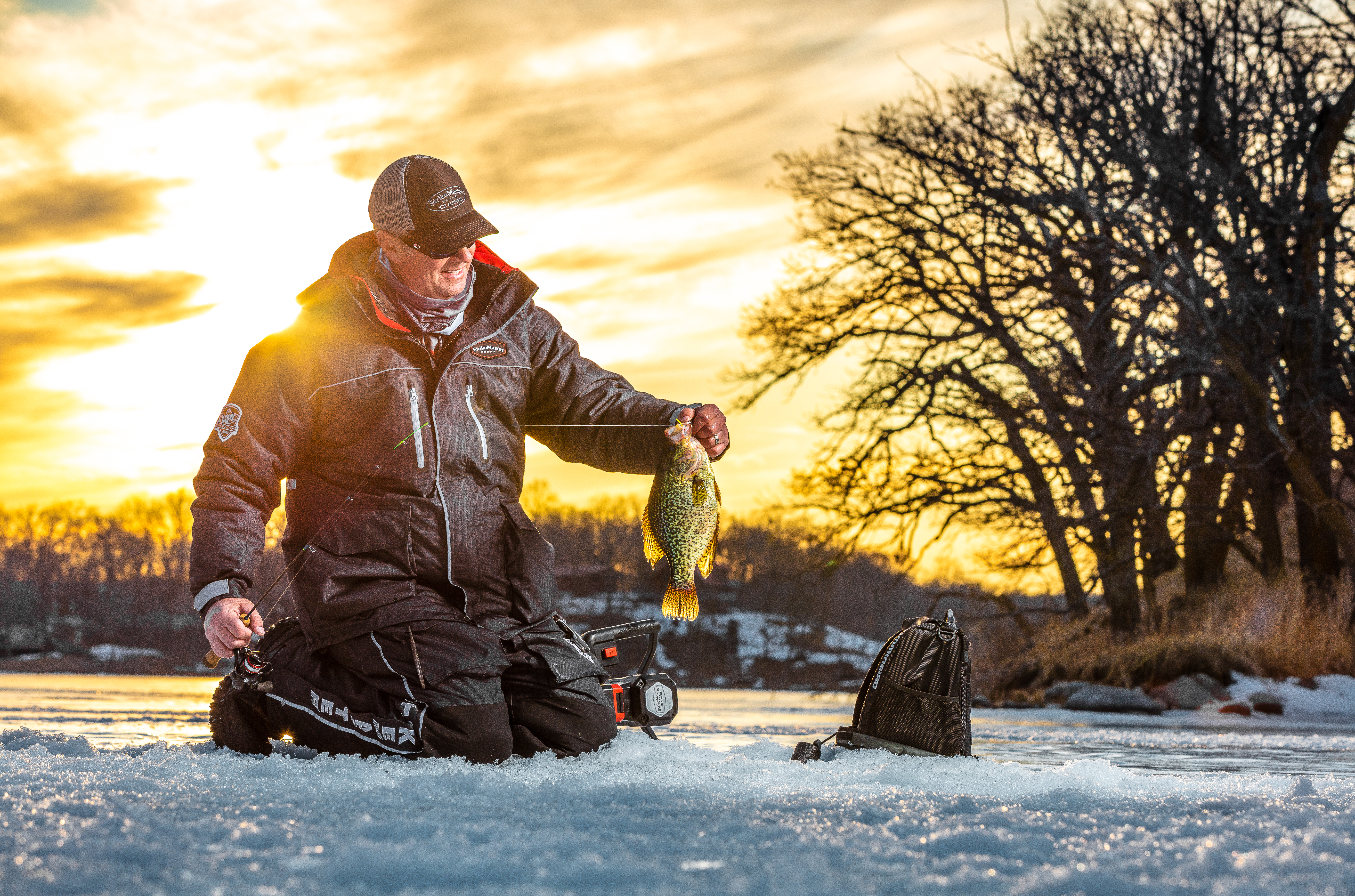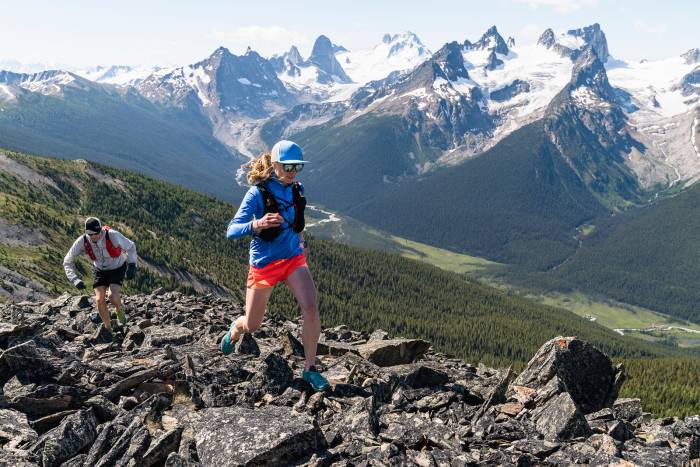Ice fishing is a sport that requires baseline knowledge and research before beginning. While it’s not rocket science, it’s a sport that relies on intense weather conditions that come with important safety considerations.
Enjoying ice fishing comfortably and safely boils down to staying warm and dry. Obviously, learning more about ice and its inherent safety risks — and keeping from falling through — is a critical part of that.
Here, we run through basic safety tips to ensure you’re adequately prepared to be on the ice. We also highlight important apparel made to withstand the often brutal elements of ice fishing and the unfortunate scenario of falling below the ice.
See the Latest StrikeMaster Flotation SuitsBuddy System
Don’t fish alone, especially if you’re inexperienced and under-equipped. A self-rescue is very difficult, and having someone else (who isn’t in shock) lending a hand can make all the difference. Falling through the ice shouldn’t deter you from ice fishing, but it’s important to be aware of the risk, even with others around you.
Ice Fishing: How To
Gauging Ice Thickness
 Only fish on ice that’s at least 4 inches thick. That does not mean walk out on it, drill it, and then measure.
Only fish on ice that’s at least 4 inches thick. That does not mean walk out on it, drill it, and then measure.
It means that you shouldn’t venture out on the ice at all if it’s under 4 inches thick. Ice thickness data is available as reported by local wildlife officials, which often have a hotline to call for quick beta. Often, your local bait shop will also have that information.
Typically, ice is thinner near the shore, above strong currents of flowing water, and around rocks or fallen logs in the water. Avoiding those areas is key, but also never assume the middle of the lake is automatically thicker.
If you can’t find ice data or want to double-check available information yourself, there are safe ways to do this. From the shore, use a drill auger to get through the ice. If it’s at least 4 inches thick, you can venture out further to measure in new spots. It’s safer to have the person on the drill tied off via rope or harness and a buddy 50 yards back as an anchor (and potential retriever).
Types of Ice
Some ice is better and stronger than other ice. Clear or blue-green ice should be hard enough to walk on. Black or gray ice may be melting, and its ability to support weight can be compromised. Likewise, white ice, often a result of inconsistent freezes, may be thick, but potentially compromised.
Is that a little too vague? It should seem so because detecting color differences in ice is not a beginner skill. Your best bet is to look for established fishing areas with signage and other ice anglers out on it. Don’t be afraid to ask more seasoned anglers for advice. Learning from someone with more expertise can help you become more confident and safe on the ice yourself.
Ice Fishing Gear
Why It’s Important
Falling through ice isn’t as common as you may think, but preparing for it with the right apparel is a wise preparation measure. And the right gear can also keep you safe (not to mention comfortable) above the ice, where hypothermia and frostbite remain risks.
A flotation suit will keep you dry and your head above water. Keeping your head and other layers dry buys time to calmly get yourself out of the water. This often involves multiple attempts to find an edge thick and sturdy enough to support pulling yourself out. Without such a suit, your clothes will hold water and add resistance to any movement you make to rescue yourself.
Additionally, you’ll have less time to react before your body starts shutting down from extreme exposure. Having enough energy and time to pull yourself out with ropes, ice picks, or even your hands can make all the difference. These and other ice safety tools and accessories are available at Rapala.

Another bonus is that flotation will give you a much better chance of regaining your warmth once you’re out of the water. Not only will it keep you from becoming fully submerged in the icy water, but the suit will continue to insulate and shield against the cold weather conditions, buying you valuable time to get to safety.
So, what is a flotation suit? There are various types of flotation suits, each with its own style and use. Keep reading to see which may be best for you!
Flotation Suits
StrikeMaster makes three suits and bibs with Stay On Surface (SOS) technology, which can help you float for 2 hours when worn as a pair. That’s enough time for you and a buddy to execute an exit strategy or call for additional aid.
The StrikeMaster Surface Jacket and Bibs use 120 g of padded insulation behind a lined fabric that’s waterproof and breathable. The jacket has internal zip pockets for phones and wallets, and there are fleece-lined handwarming pockets on the outside. Other key specs are the magnet flap to cover the main zipper, a removable hood, and D-rings on the cargo pockets for keeping tools and accessories within reach.
For colder temperatures and adjustability when it warms up, there are the StrikeMaster Pro Jacket and Bibs. The 3-in-1 jacket includes a zip-out puffy insulated jacket, a main jacket stuffed with 140 g of 3M insulation, and a water-repellent and breathable shell fabric that uses a ripstop polyester for added protection from tears. Otherwise, it has the same hood, zipper, and pocket features as the Surface model.
The Pro Bibs have a waterproof hem, side zippers with magnet-close flaps, layers of 5mm EVA foam knee padding, and an adjustable inseam to better fit different leg lengths.
The StrikeMaster Allie Jacket and Bibs take the tech of the Pro suit and shape them based on women’s feedback into a suit made with their needs in mind. Named after one of its designers, the brand explains, “every Allie Suit comes with a liner patch bearing inspiration from Allie, a mother, cancer survivor, and ice angler.”
Similar to the Pro, the Allie Suit features a 3-in-1 jacket with a zip-out puffy layer and 100 g of 3M Insulation, and the outer jacket and bibs feature 140 g of the same. Both the jacket and bibs have fleece-lined handwarming pockets and D-rings for latching on accessories.
The Allie Bibs also have layers of foam knee padding, zip-off tops for other winter activities, and internal leg gaiters for added protection.
It doesn’t stop there. StrikeMaster knows the importance of bringing up the next generation of ice anglers, so the brand created a pair of Youth Surface Bibs and a Youth Jacket. Both of these include the same SOS technology as the adult offerings, so you can fish easy knowing you and your loved ones are safe.
Warm, Safe, Fun
If you’re new to the sport, try to find an experienced ice angler to go with. They can offer some good general advice as well as help you with actual fishing tips.
You can always ask your local shop for nearby ice fishing spots and check for any items you might be missing. That can range from tackle to necessary gear.
A little preparation can go a long way toward making your first ice fishing experience more comfortable, safe, and fun.
Explore the StrikeMaster SOS Suits and BibsThis article is sponsored by StrikeMaster, a Rapala brand. Find out more about its fishing safety gear here.











